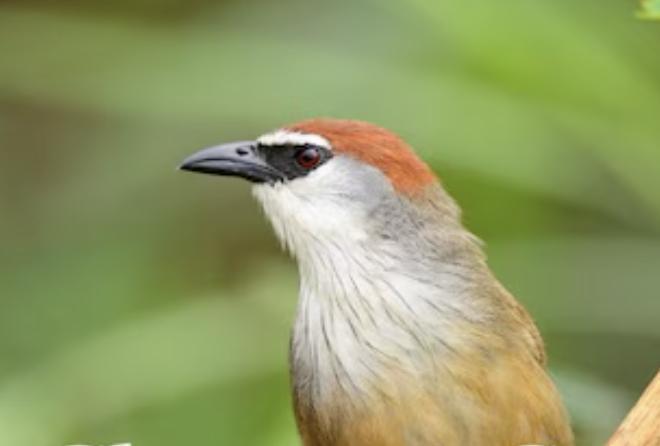
Chestnut-capped Babbler Spotted in Bengal’s Howrah after 150 Years
India is home to a staggering array of biodiversity, with new species being discovered every year. However, some species have been elusive and thought to be extinct for centuries. Recently, researchers from the Zoological Survey of India (ZSI) made a groundbreaking discovery in Howrah’s riverine grasslands, spotting the chestnut-capped babbler (Timalia pileata) after a hiatus of nearly 150 years. This timid insectivore, which avoids human presence, has been a rare sight in South Bengal, with the last recorded sighting dating back to 1875.
The chestnut-capped babbler is a small, shy bird that is typically found in dense forests and grasslands. It has a distinctive chestnut-colored crown and white stripes on its face. The bird’s diet consists mainly of insects, which it forages for in the undergrowth. Its elusive nature and limited range make it a rare sight, even for seasoned birdwatchers.
The last recorded sighting of the chestnut-capped babbler in South Bengal was by JC Parker at Salt Lake in 1875. Since then, despite numerous searches, the bird was considered to be extinct in the region. However, the recent spotting by ZSI researchers has reignited hope that the species may be more resilient than previously thought.
The discovery was made by a team of researchers from the ZSI, led by Dr. Suresh C. Mishra, in collaboration with local bird enthusiasts and conservationists. The team spent several months conducting surveys and monitoring the bird’s behavior in the riverine grasslands of Howrah.
“We were thrilled to spot the chestnut-capped babbler in the wild after so many years,” said Dr. Mishra. “The bird’s shy nature and limited range make it challenging to spot, but our persistence and patience paid off. This discovery is a significant finding for Indian ornithology and highlights the importance of conservation efforts in the region.”
The conservation status of the chestnut-capped babbler is currently listed as “Least Concern” by the International Union for Conservation of Nature (IUCN). However, the recent spotting has raised concerns about the bird’s habitat and population size. The riverine grasslands of Howrah, where the bird was spotted, are under threat from human activities such as agriculture, urbanization, and pollution.
“This discovery highlights the need for urgent conservation efforts to protect the habitat and population of the chestnut-capped babbler,” said Dr. Mishra. “We urge the government and local authorities to take immediate action to protect the bird’s habitat and prevent the loss of its natural habitats.”
The spotting of the chestnut-capped babbler has also sparked interest among birdwatchers and nature enthusiasts in the region. The bird’s elusiveness and rarity make it a prized sighting for many bird enthusiasts, who are now flocking to the riverine grasslands of Howrah to catch a glimpse of the bird.
The discovery of the chestnut-capped babbler is a significant finding for Indian ornithology and highlights the importance of conservation efforts in the region. As we celebrate this momentous occasion, it is essential that we recognize the importance of preserving our natural habitats and protecting our biodiversity. The spotting of the chestnut-capped babbler is a reminder of the wonders that await us in the natural world, and the importance of preserving it for future generations.






